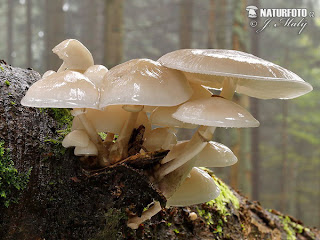Earthworm Dissection
On last friday, the 30th of November, our class had a earthworm dissection. When I walked into the class and saw the dissection guide sheet to pick up, I thought it was just gross. But because of this experience, I would be able to handle other dissections without having difficult times. The purpose of this dissection was to see the parts and organs, how they are connected to each other, and where they are located. Before this dissection, to be honest, I was not even interested in earthwom and willing to learn about it. But after the experience I could actually learn the parts that I would not be able to by just reading textbook and looking at pictures. It was amazing how an earthworm is structured so perfectly for example, how setae makes the earthworm move and well adapted to its habitat, also how the reproduction works and make soil good. For each part, we wanted to take photos of them but the quality of our camera wasn't good so I had to upload pictures from Google image. Below are photos and answers for each questions
| 1. the name of the pumping organs of an earthworm is known as aortic arches or auxiliary hearts which pumps blood throughout the body. And a worm has 5 hearts. |
| 2. . This is the picture showing the digestive tract through which food passes. Mouth: opening to the digestive tract Pharynx: helps suck food in Esophagus: helps move food to crop Crop: helps moisten food Gizzard: sand and gravel helps grind food up; this is used in Mechanical digestion Large Intestine: further digestion and absorption; this is used in chemical digestionAnus: excretes wastes |
| 3. The cerebral ganglion serves as the brain of the earthworm, and is the swollen region of nerves which connects every segment to the brain. It is connected with the ventral nerve cord as you can see in the picture. The ventral nerve cord runs down the entire length of its body. At each segment on the ventral nerve cord is a ganglion. |
4. It is essential to understand the effects of earthworms' excretory system on soil. They produce a lot of excrement. Long tubes called nephridia collect waste which goes into the bladders at the end of each nephridium. Then the bladder expels liquid waste through pores along the body, and solid waste exits to the soil through the intestines and the anus. |
5. In this photo, the earthworms are eating organic wastes, such as vegetable peelings. Earthworms are substrate feeders, meaning that it feeds on its surroundings. They live in soil, so they eat what is in the soild such as decaying plant and animal matter with some soil in it. |
| 6. The setae makes an earthworm well adapted to its habitat, the setae, or hair-like projections from each segment help the earthwrom to attach onto the soil when it burrows and move through the dirt. Without the help of the setae, the earthworm would have difficult time to pull itself forward and be unable to live in its environment. |
| 7. The earthworm's digestive system is adapted for extracting relatively small amounts of food from large amounts of ingested soild because it has a muscular organ called Gizzard. The gizzard churn the food and breaks it down. |
| 8. If I dissect the remainder of the worm to its posterior end, I would be able to obserb the continuation of the intestine, the ventral nerve cord, and the anus because From about 1/3 the way down its pharynx, esophagus, crop and gizzard. The rest of the worm to the end is all intestine. |
| 9. Earthworm's reproductive organs have important roles. The third set of setae is used in the mating process. They are used to hold the earthworms together while mating. These setae actually penetrate the mate’s body during the mating act. Once they are in position, sperm from each worm passes to the other and is collected and stored in special sacks. The process lasts 2 to 3 hours. In the second part of the reproductive process, a special slimy substance is produced by the clitellum the slime forms a tube around the earthworm. Then he crawls backwards into his tunnel and the slime tube slips forward off of his body. As it does, it passes over the male and female openings, the eggs (from the parent) and the sperm (from the mate) are released from the body.The cocoons are deposited deep inside the worms tunnel below the frost line. The earthworms usually hatch within 30 to 60 days, and they will only hatch if and when the conditions are right for their survival. If there is not enough soil bacteria (the good kind) the worms will not be released. |



























.jpg)




